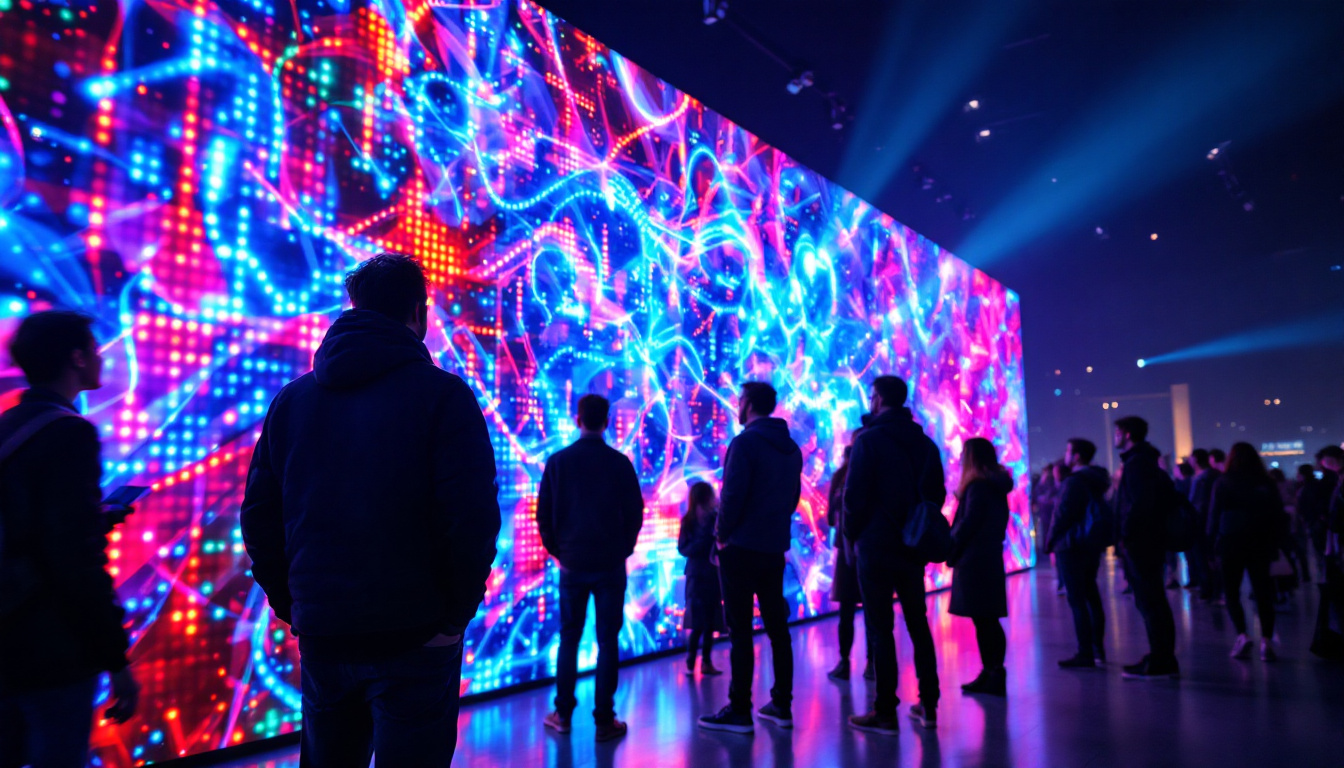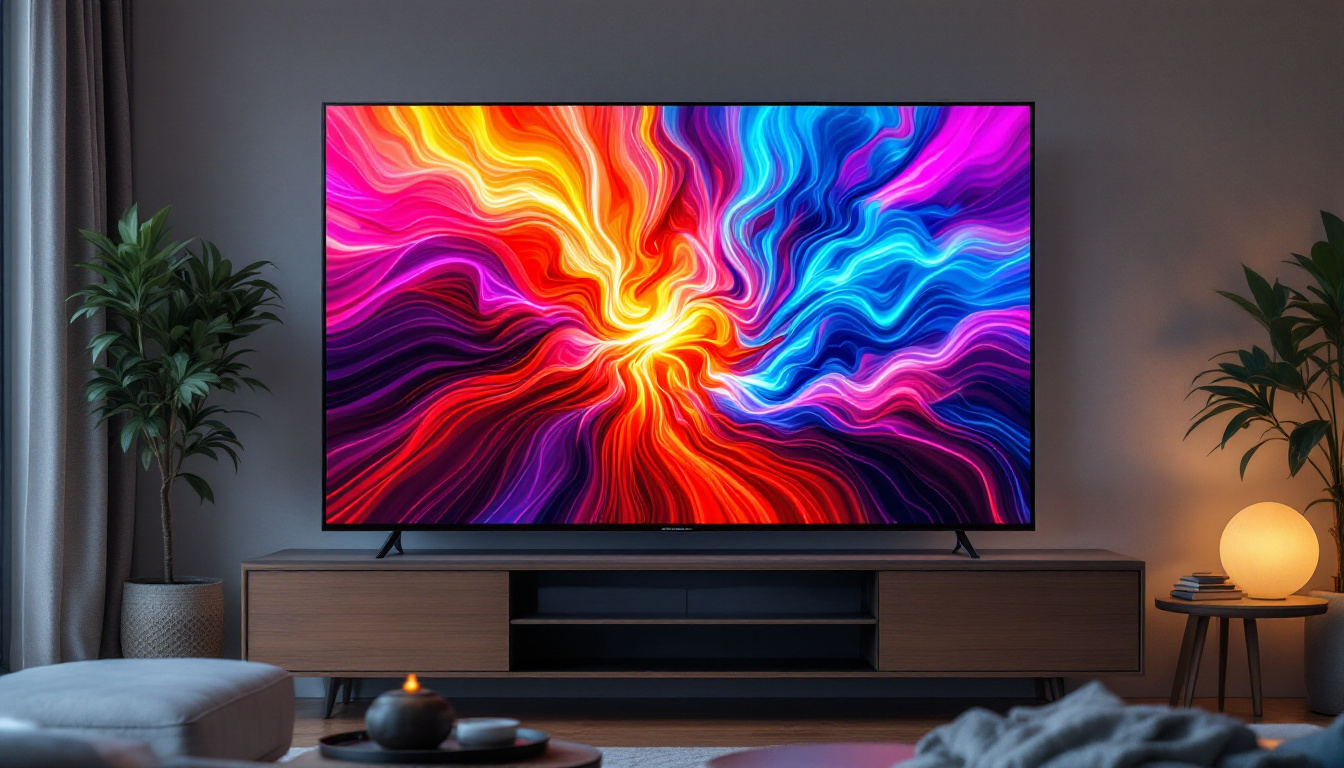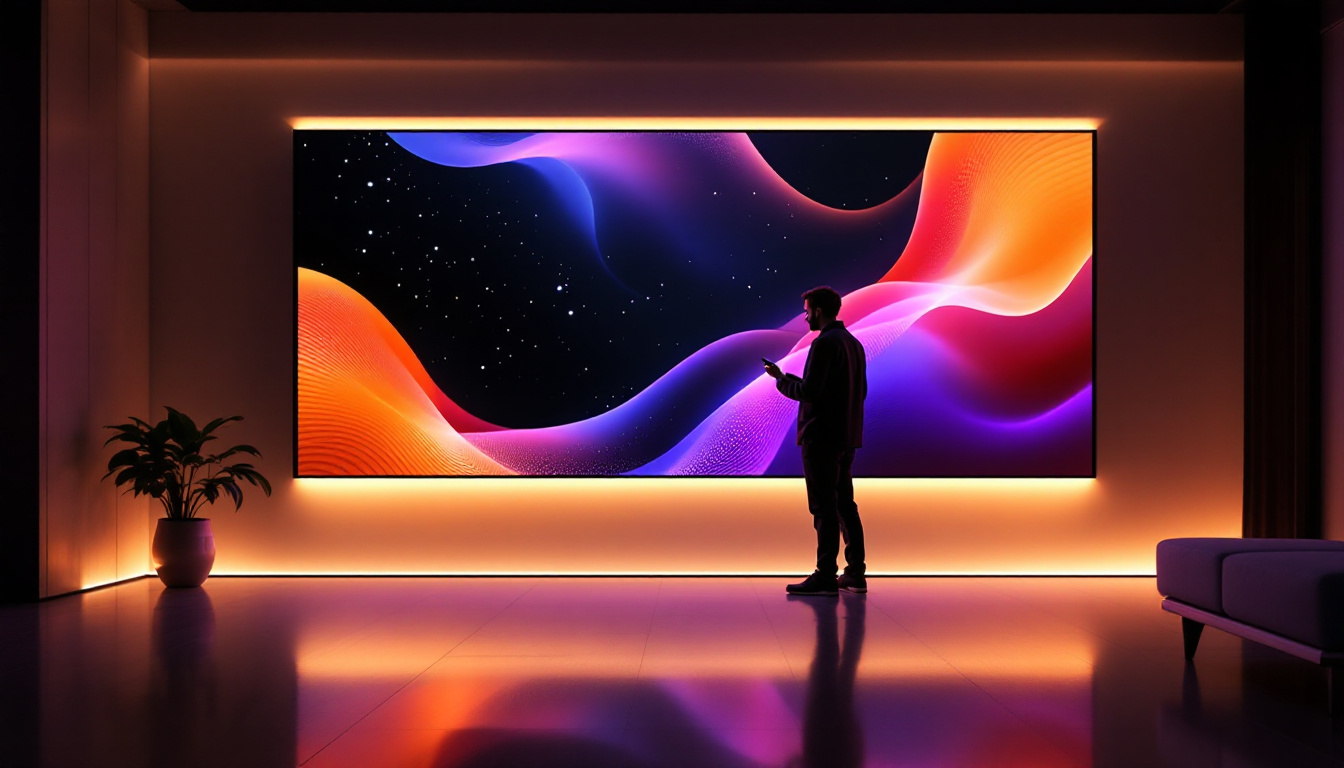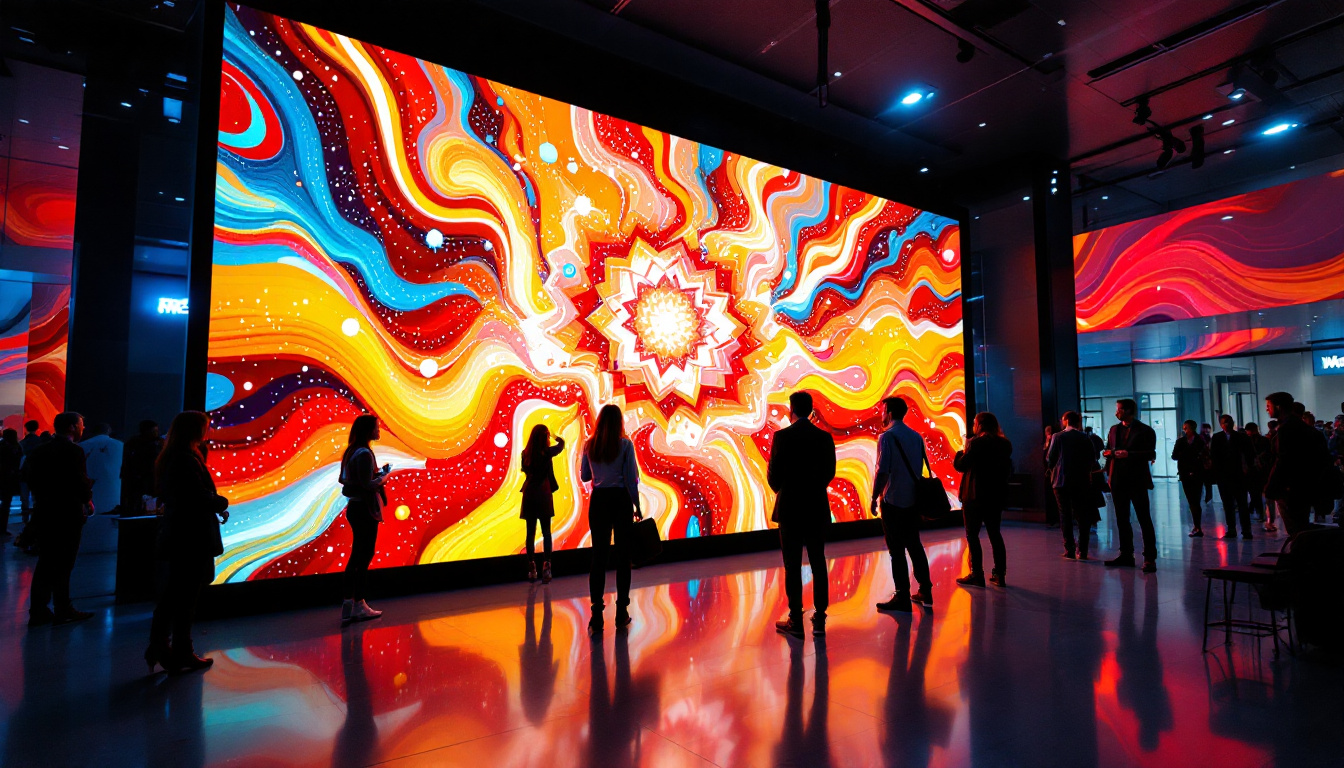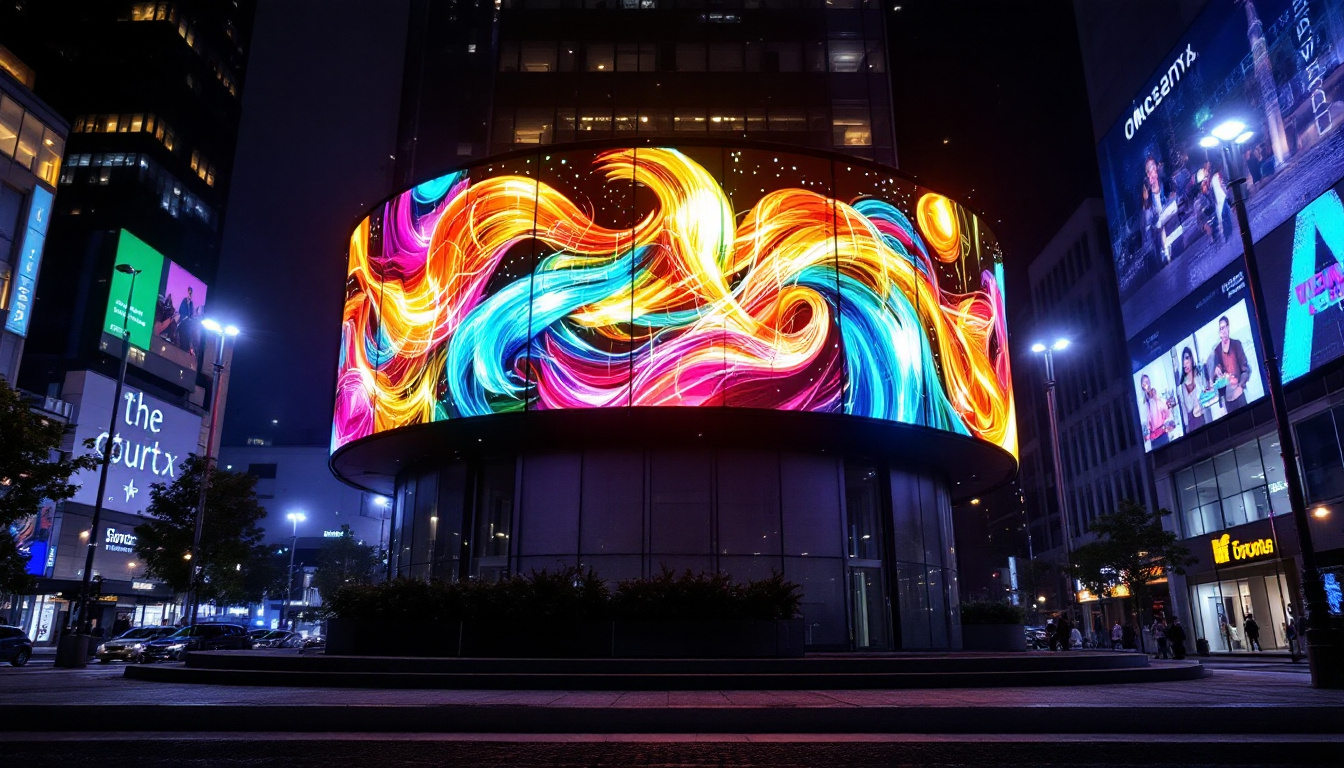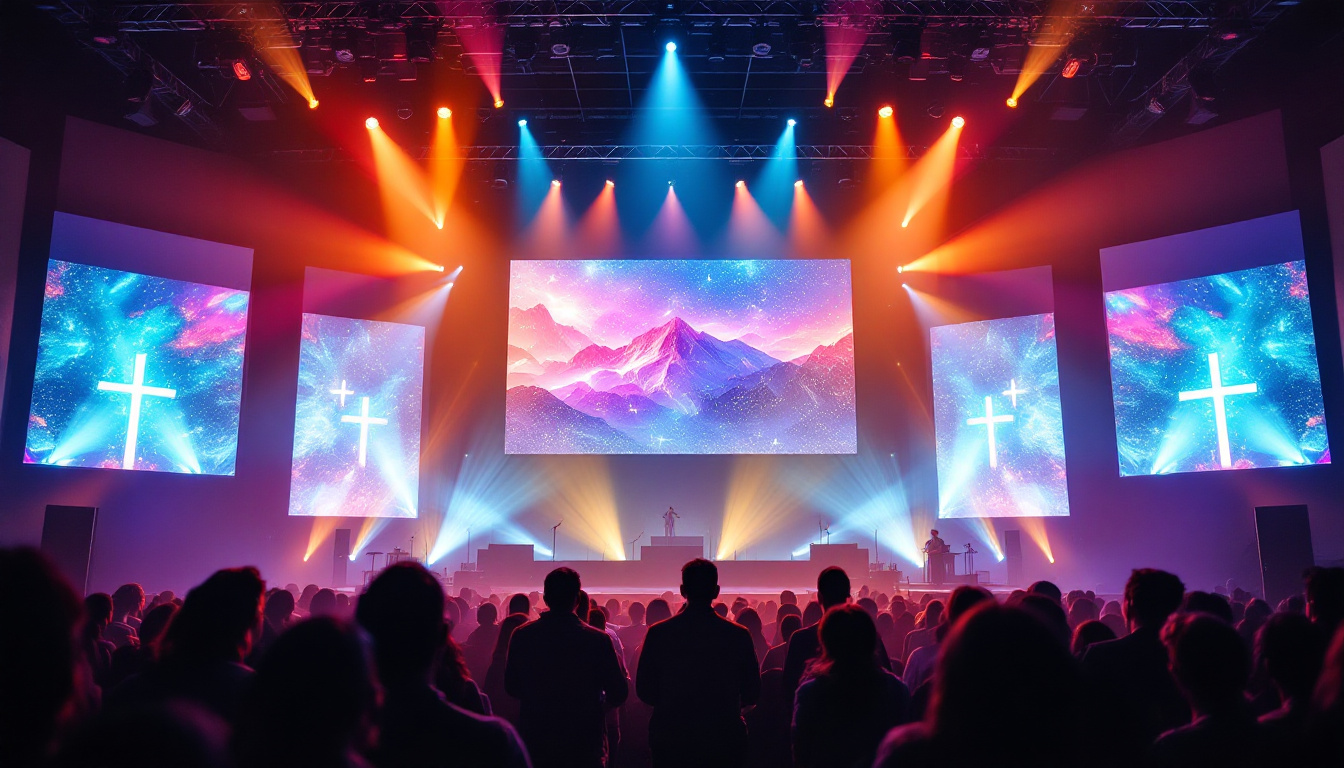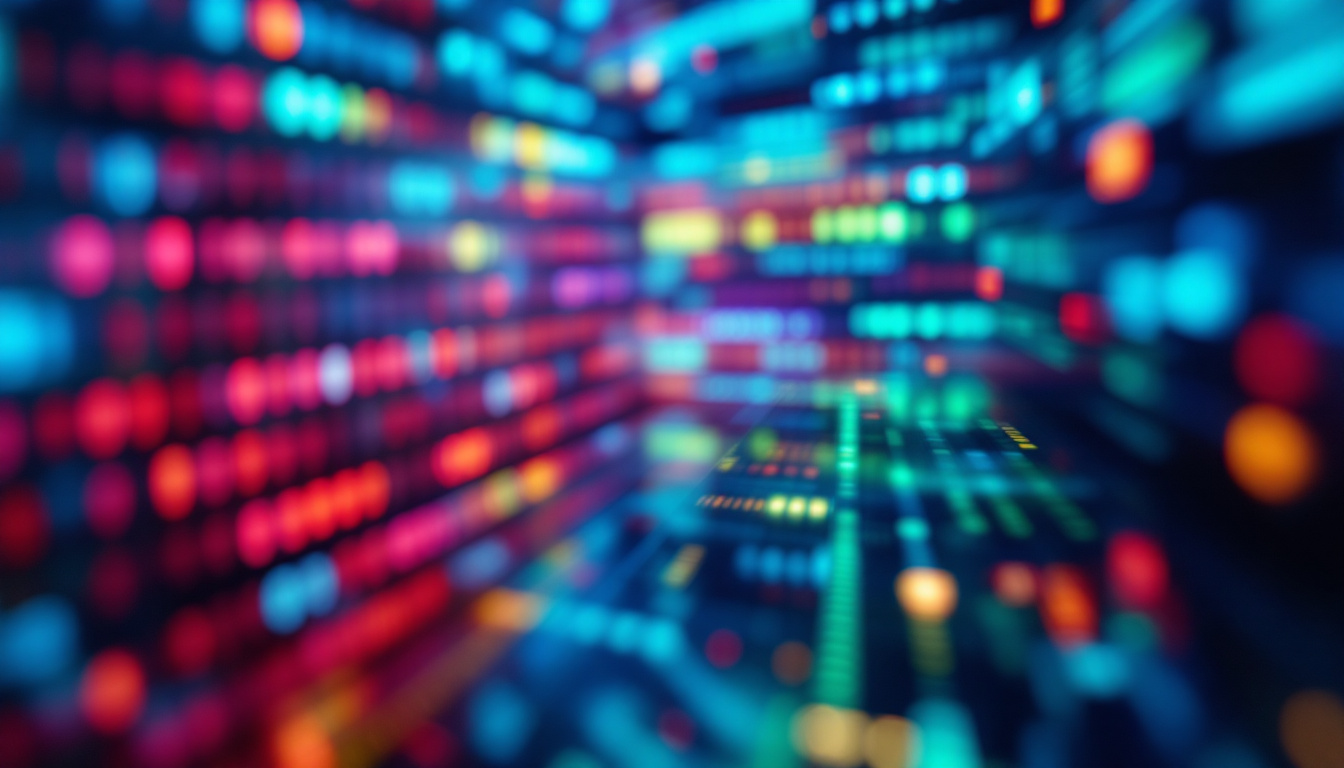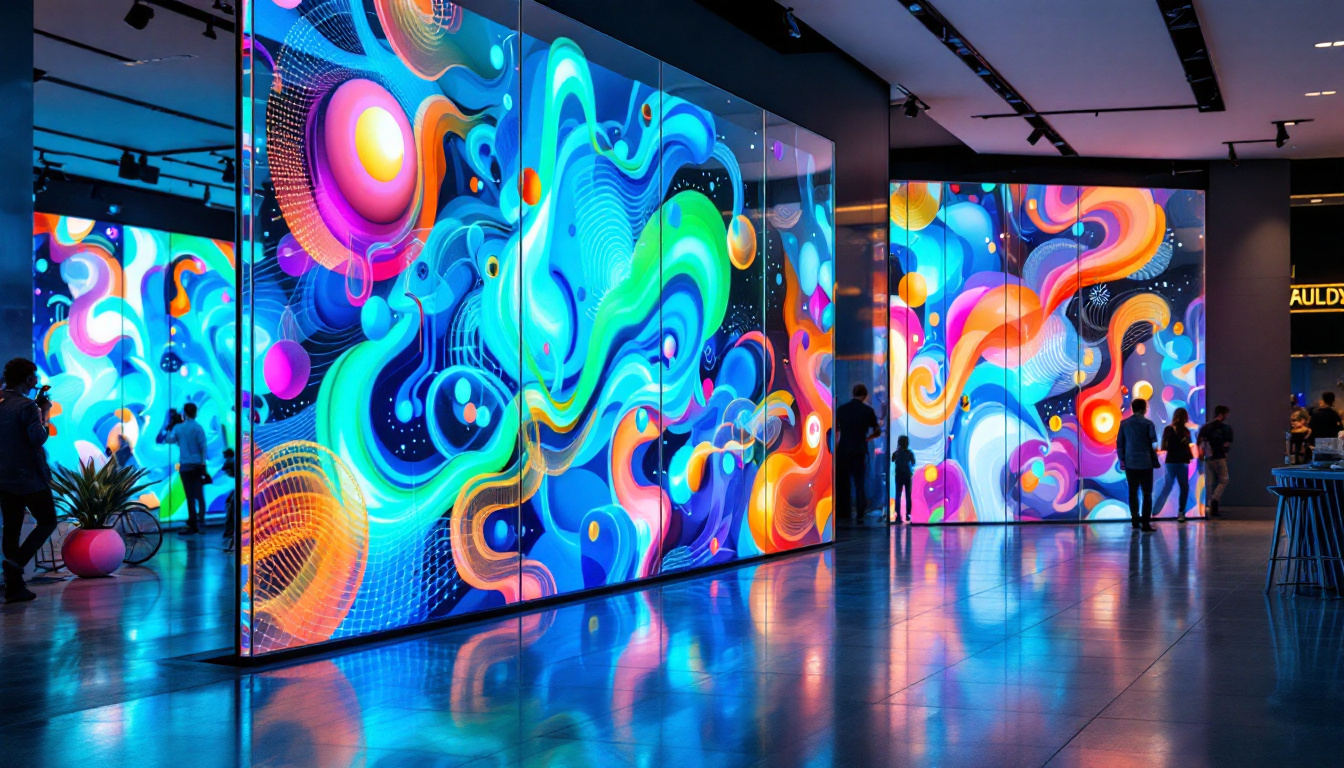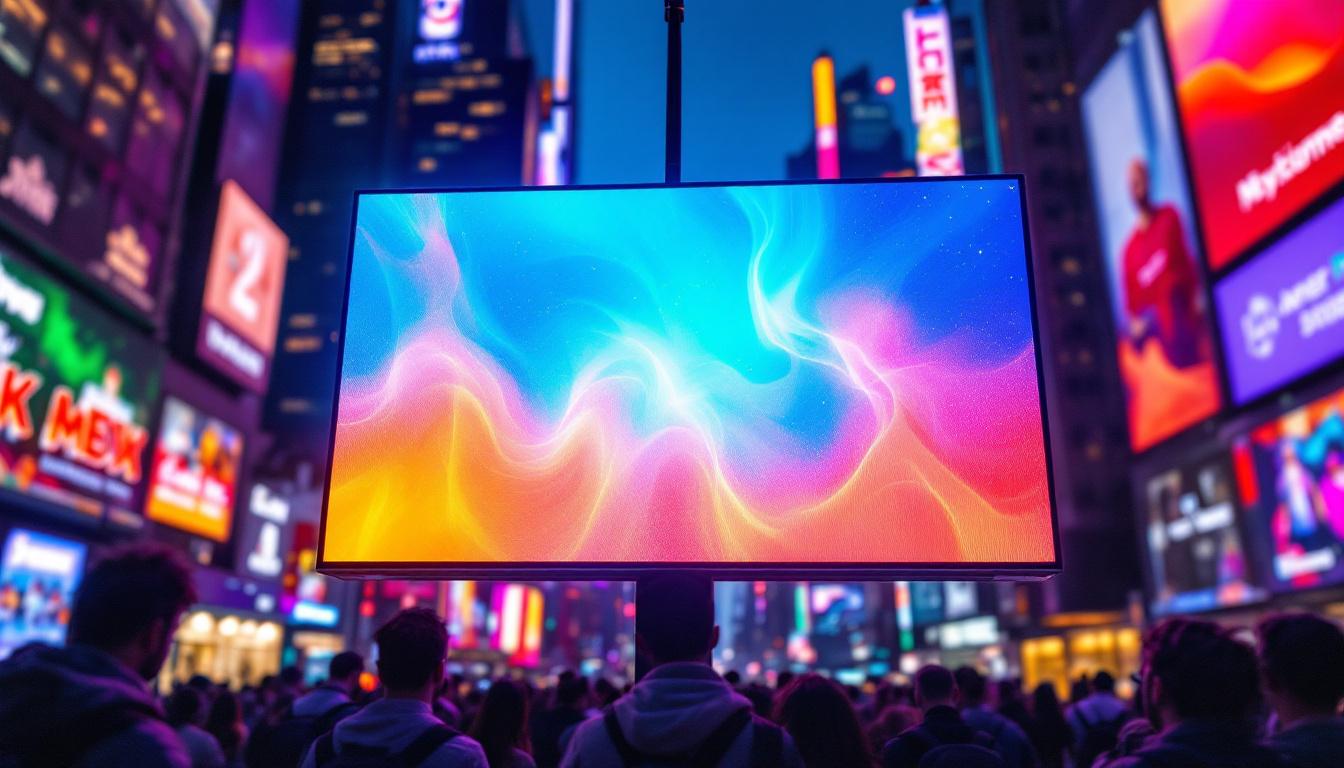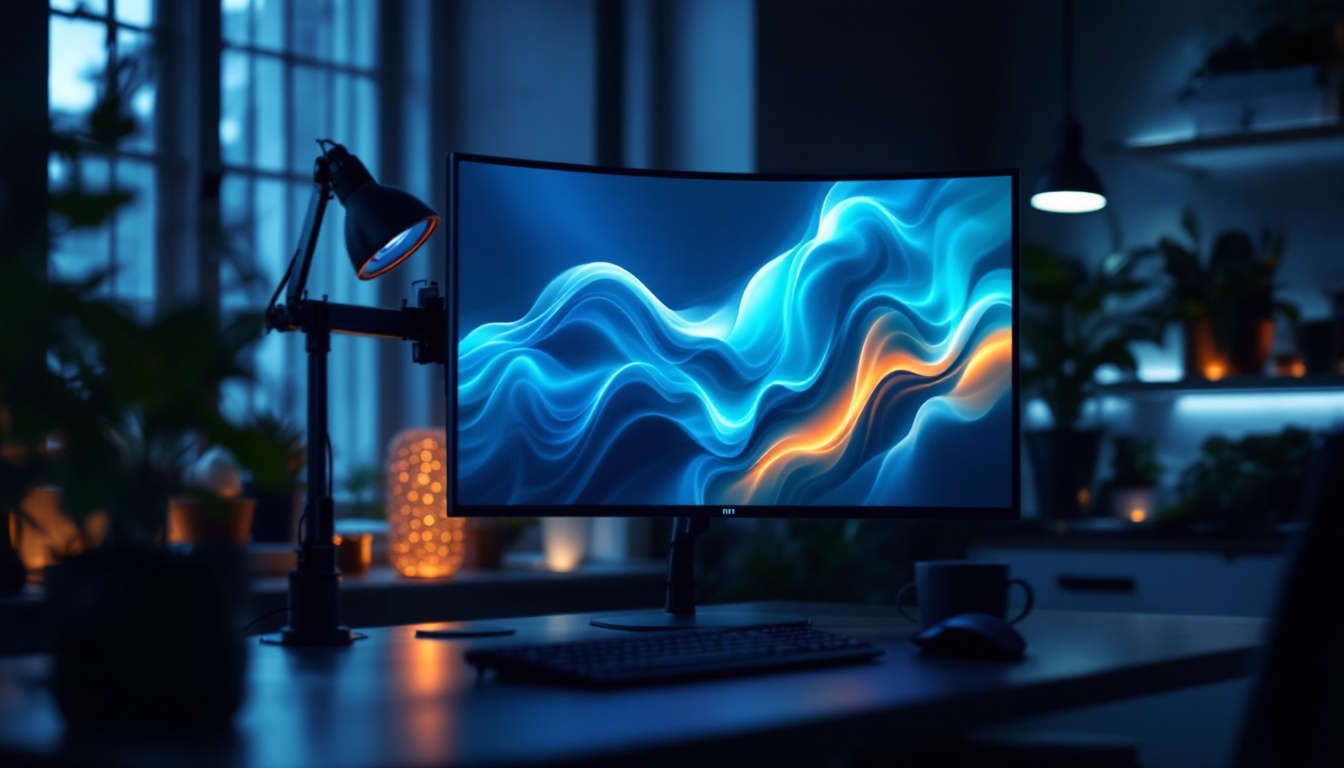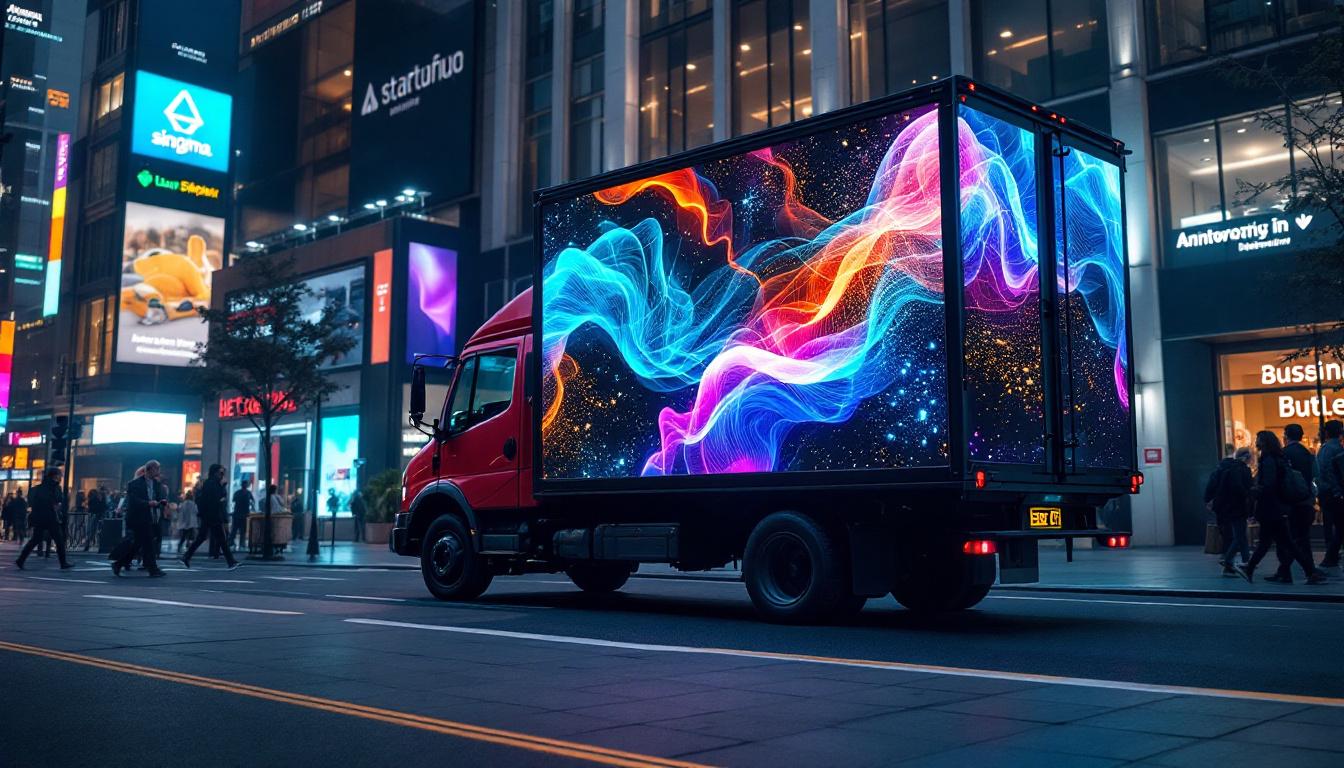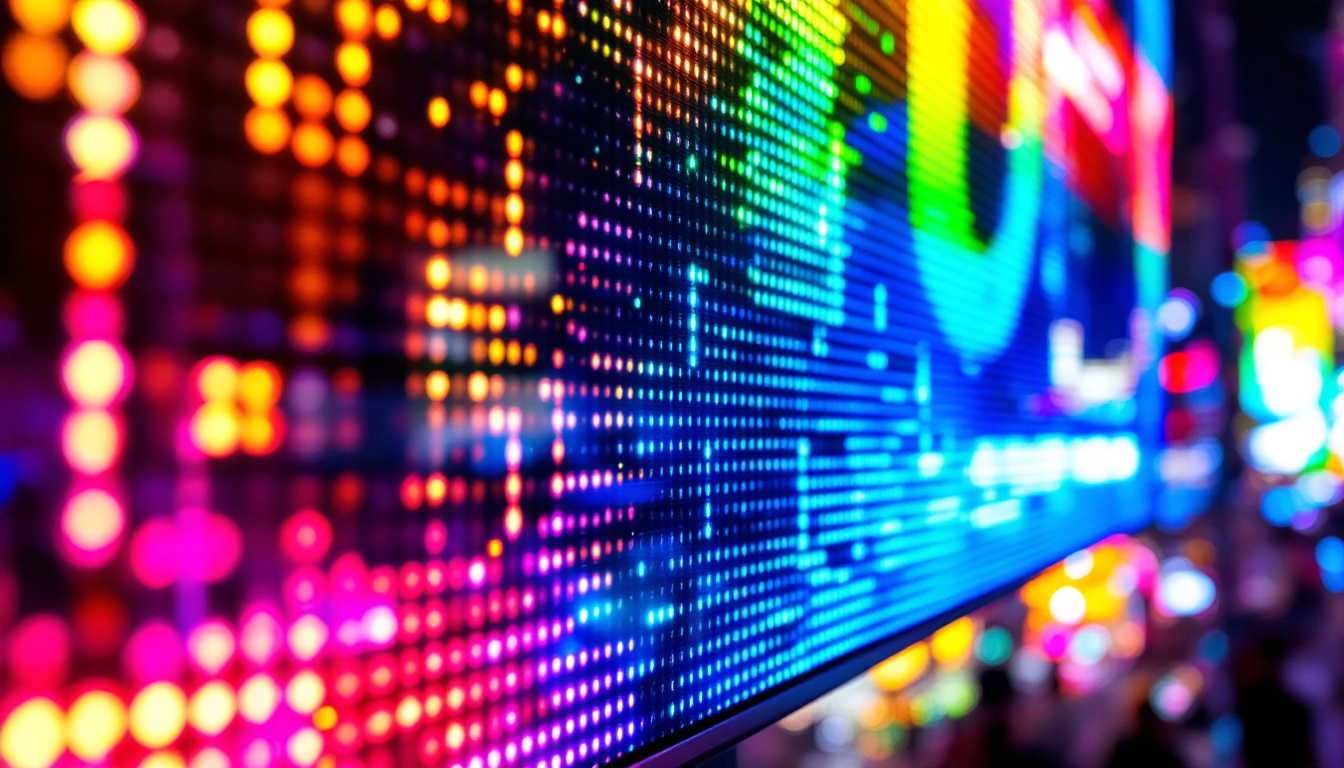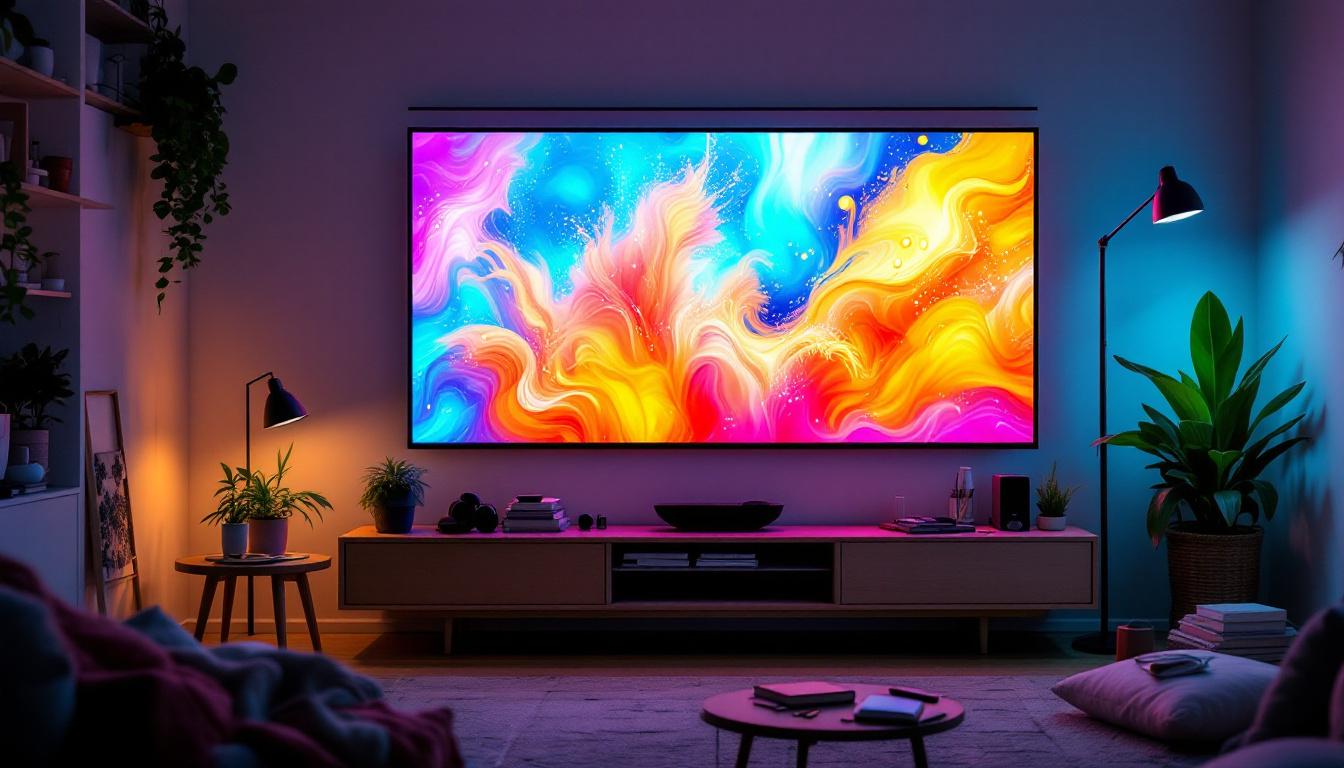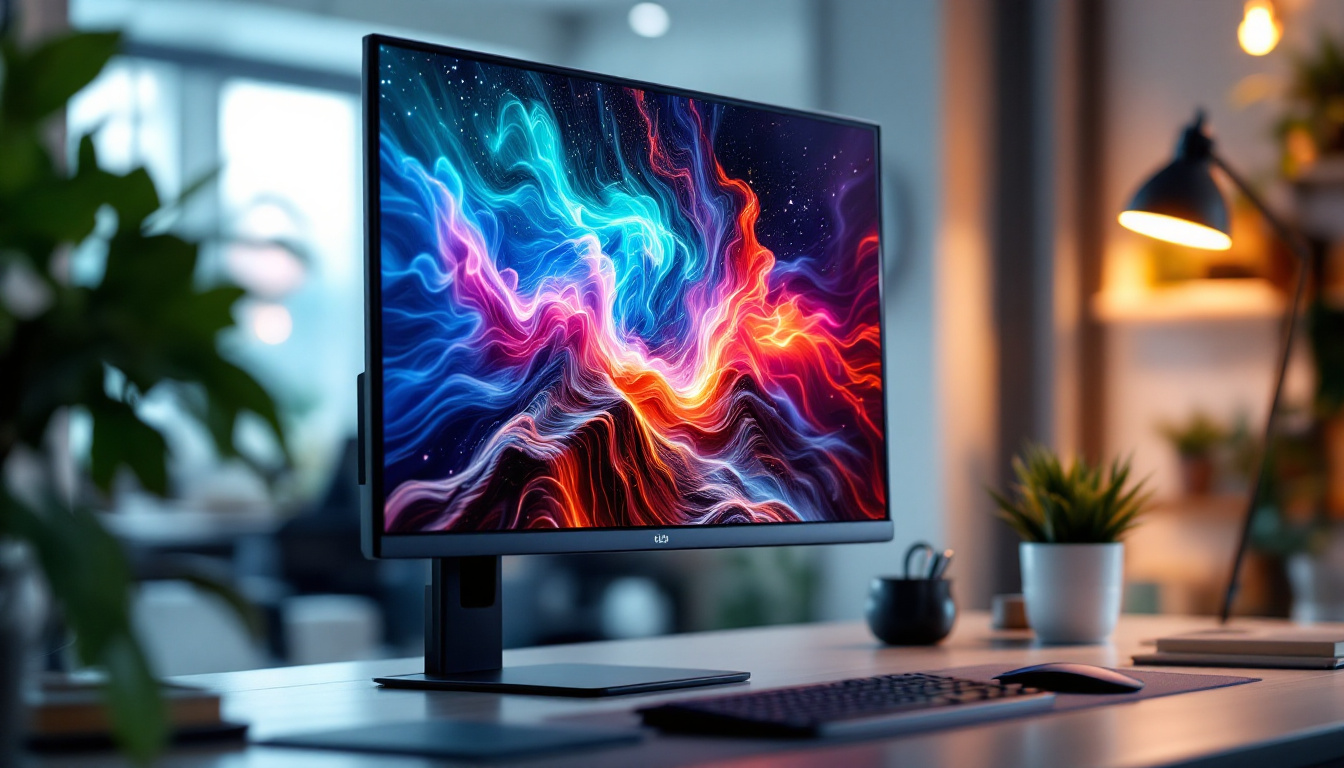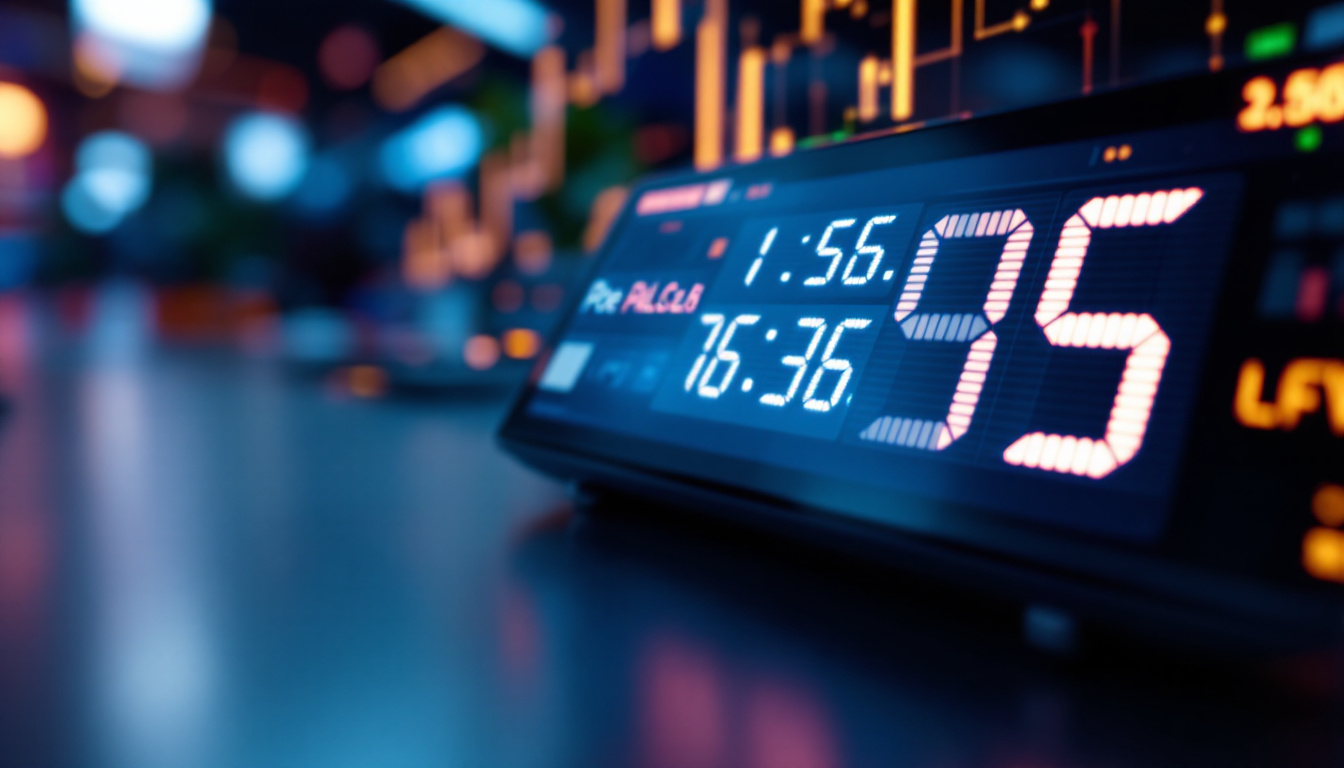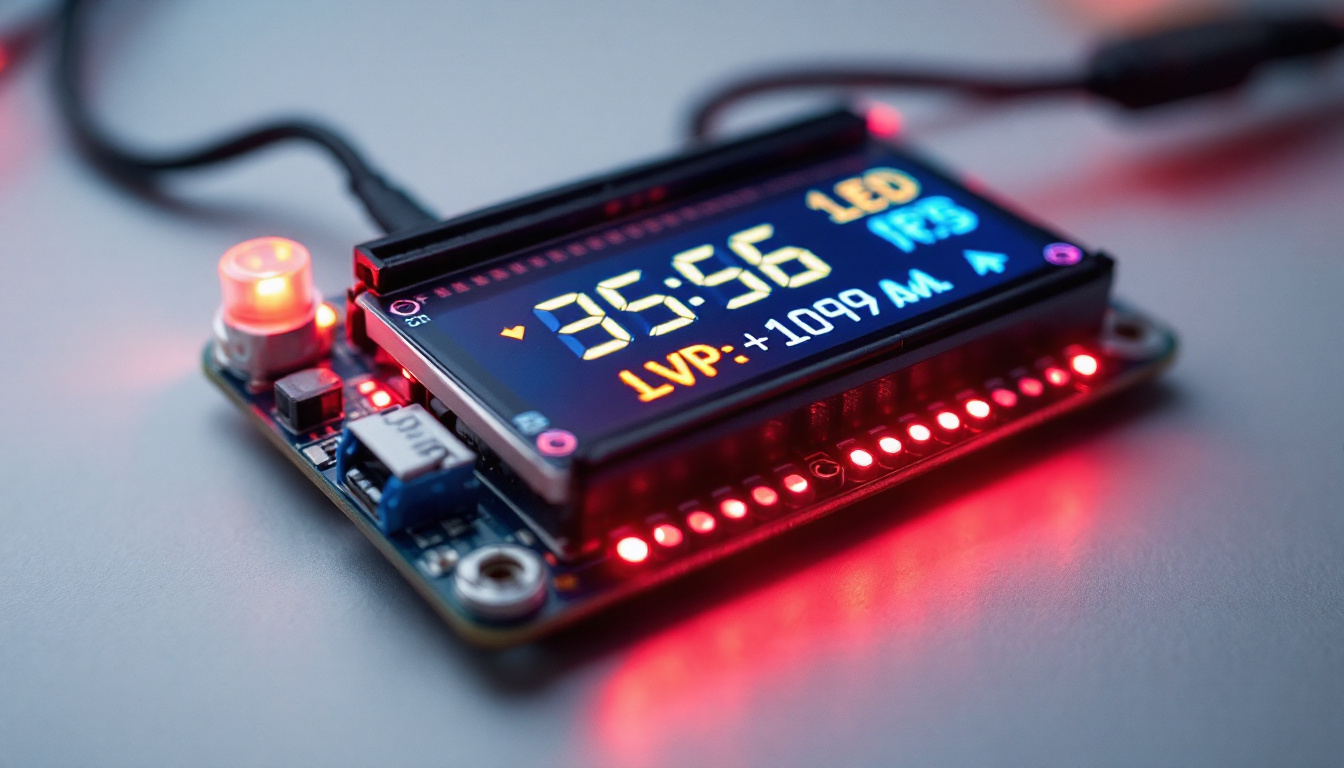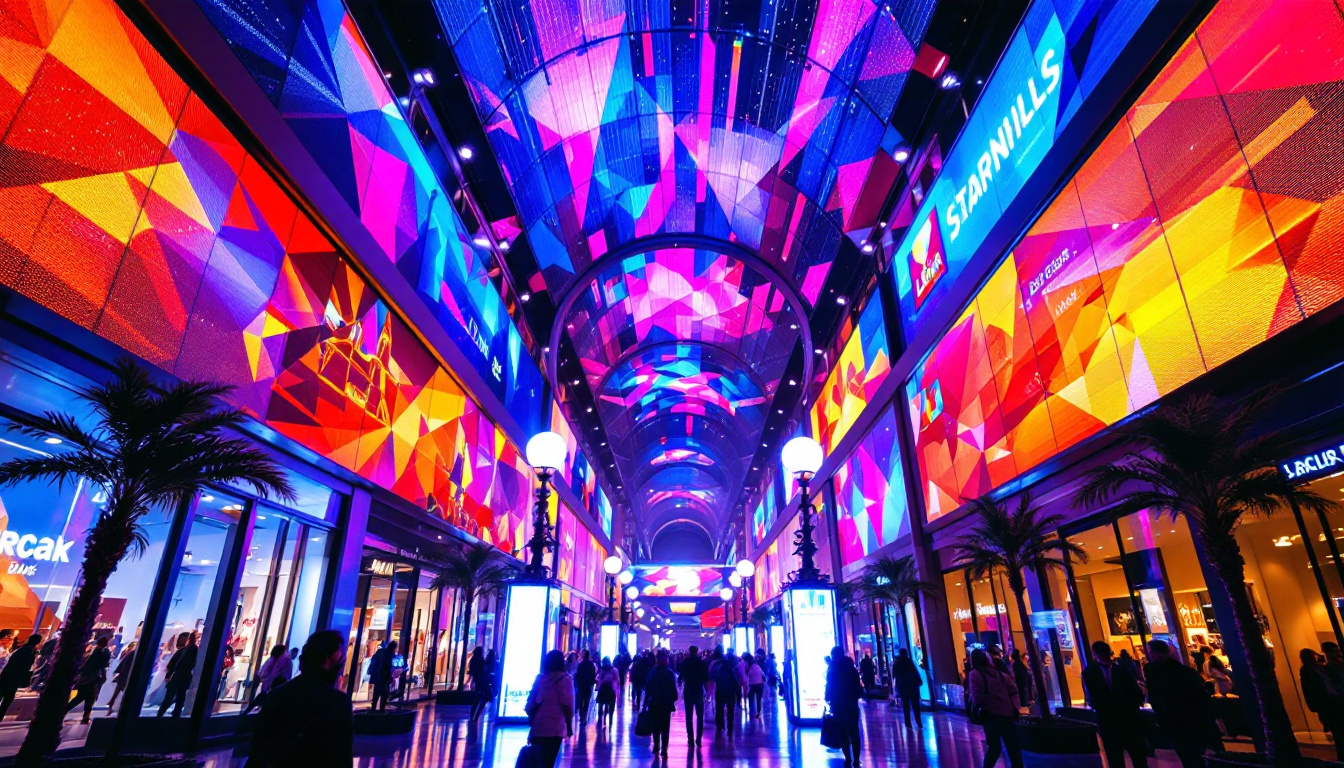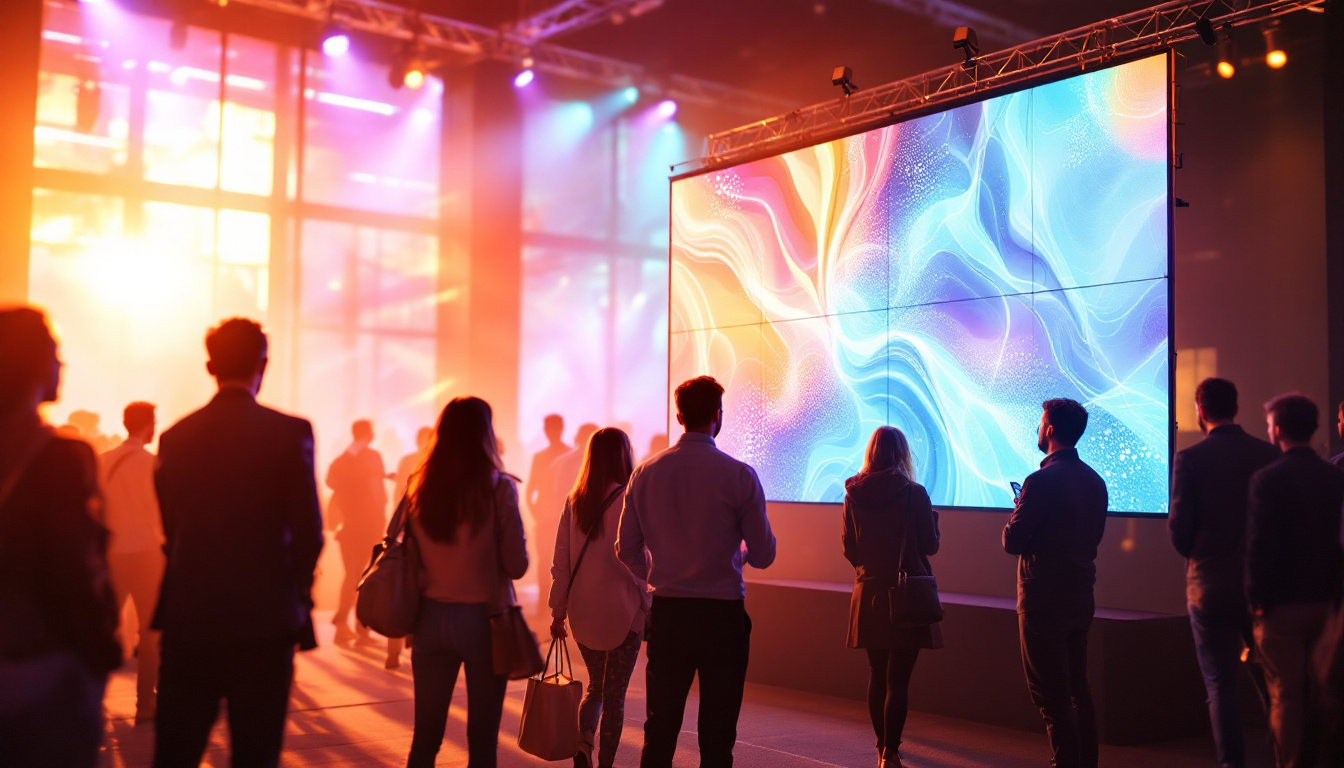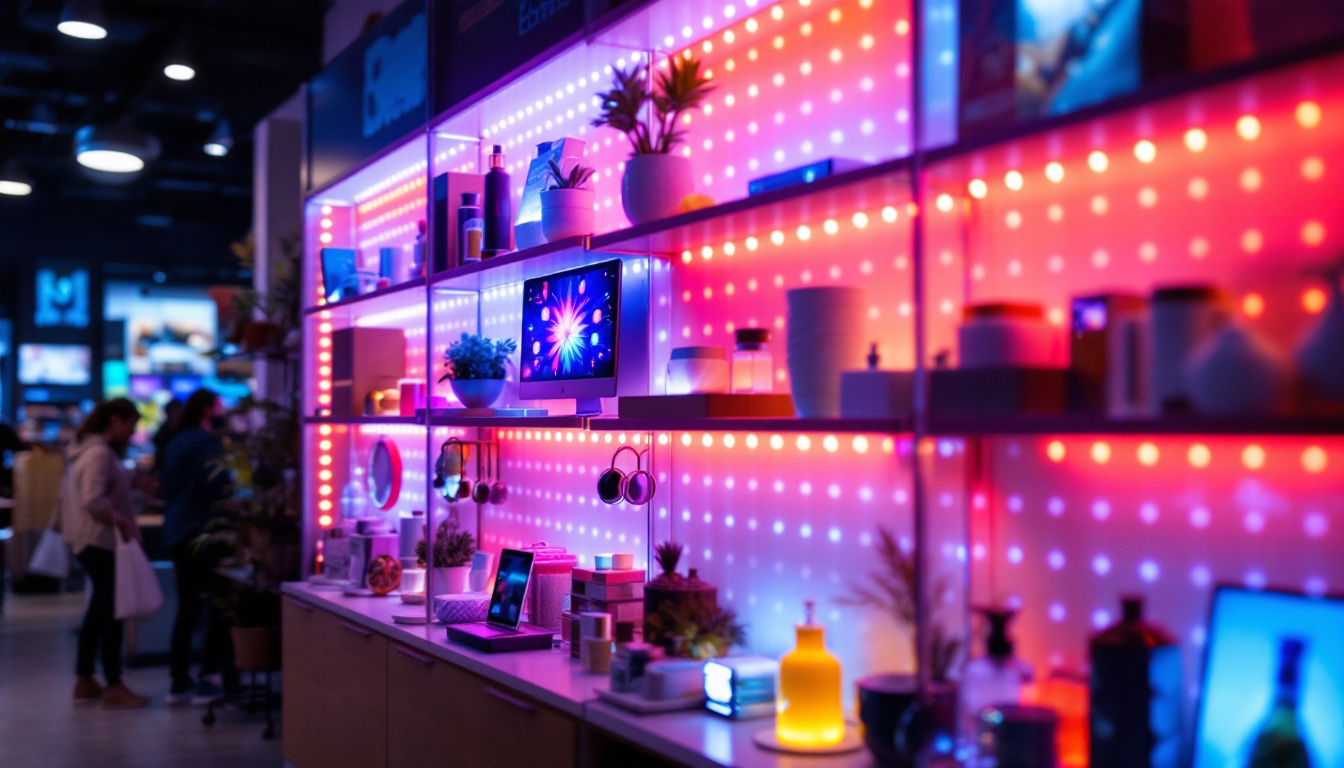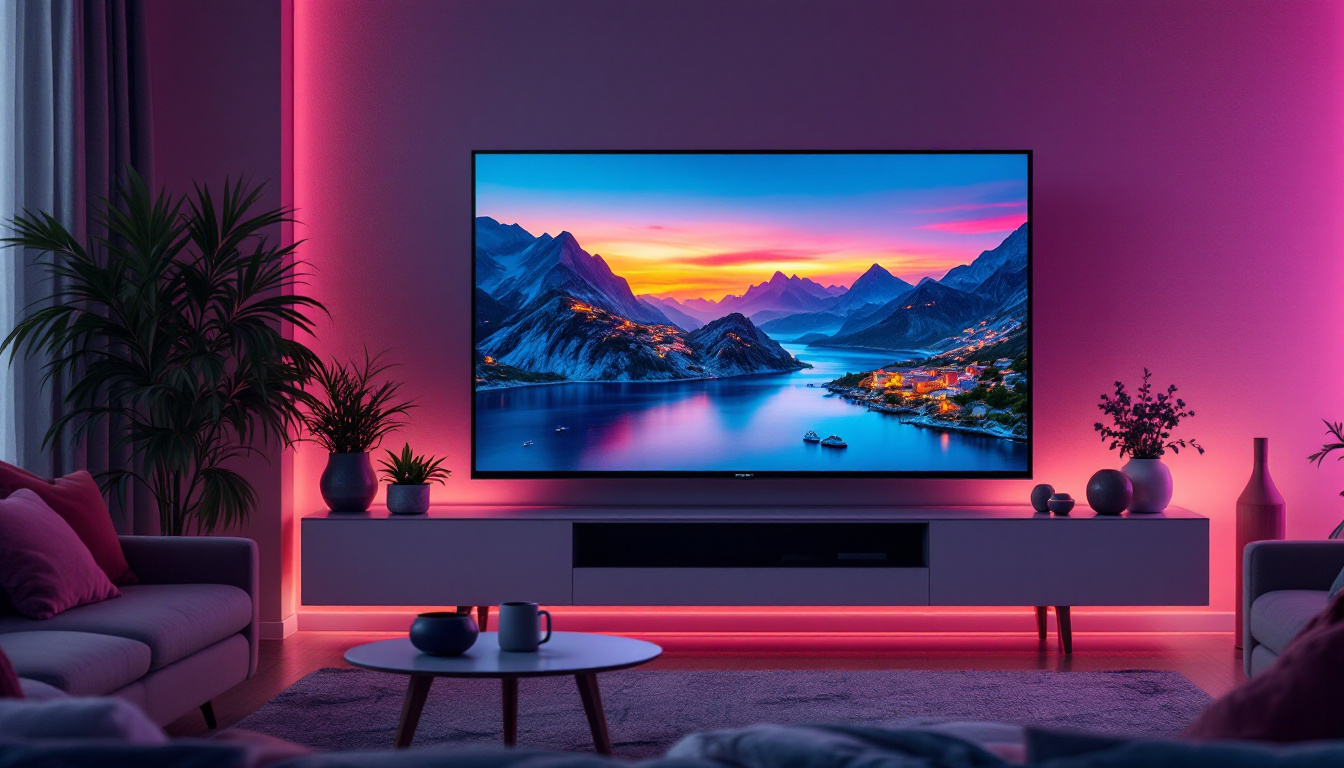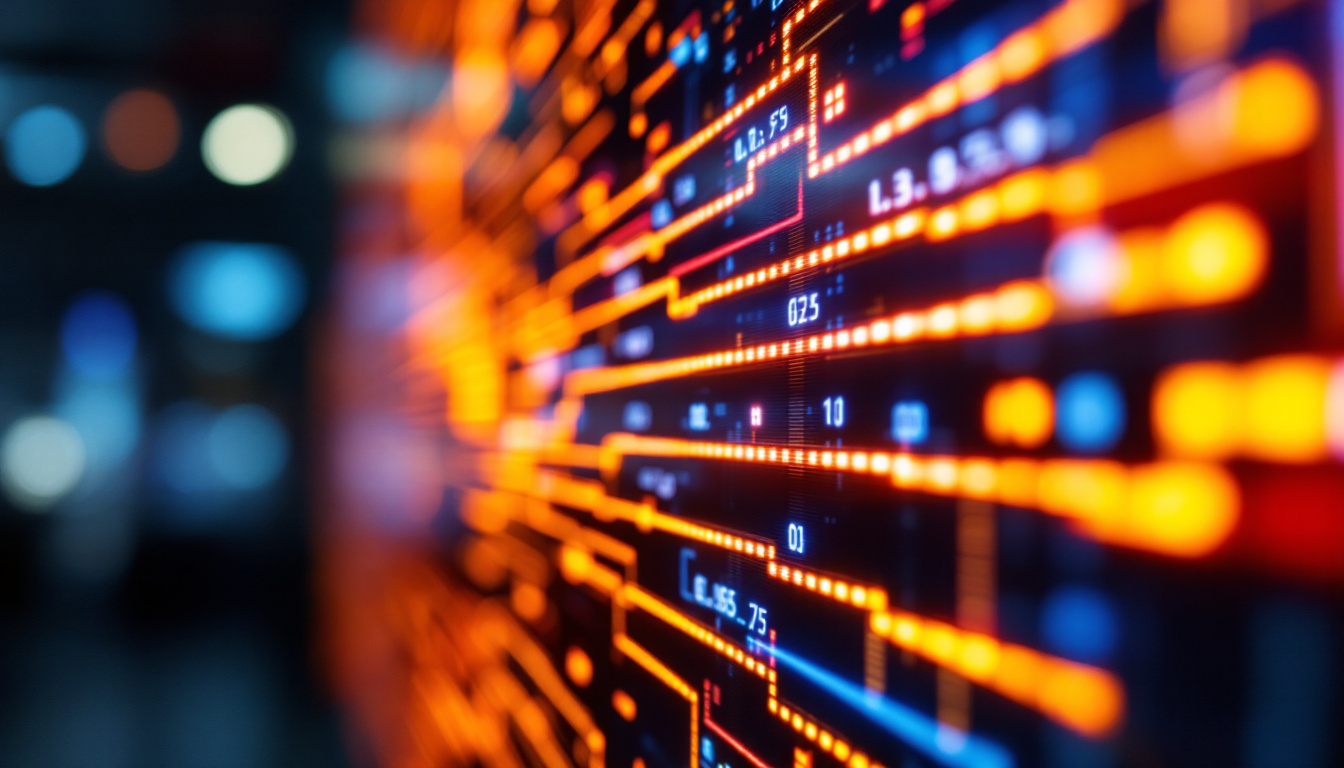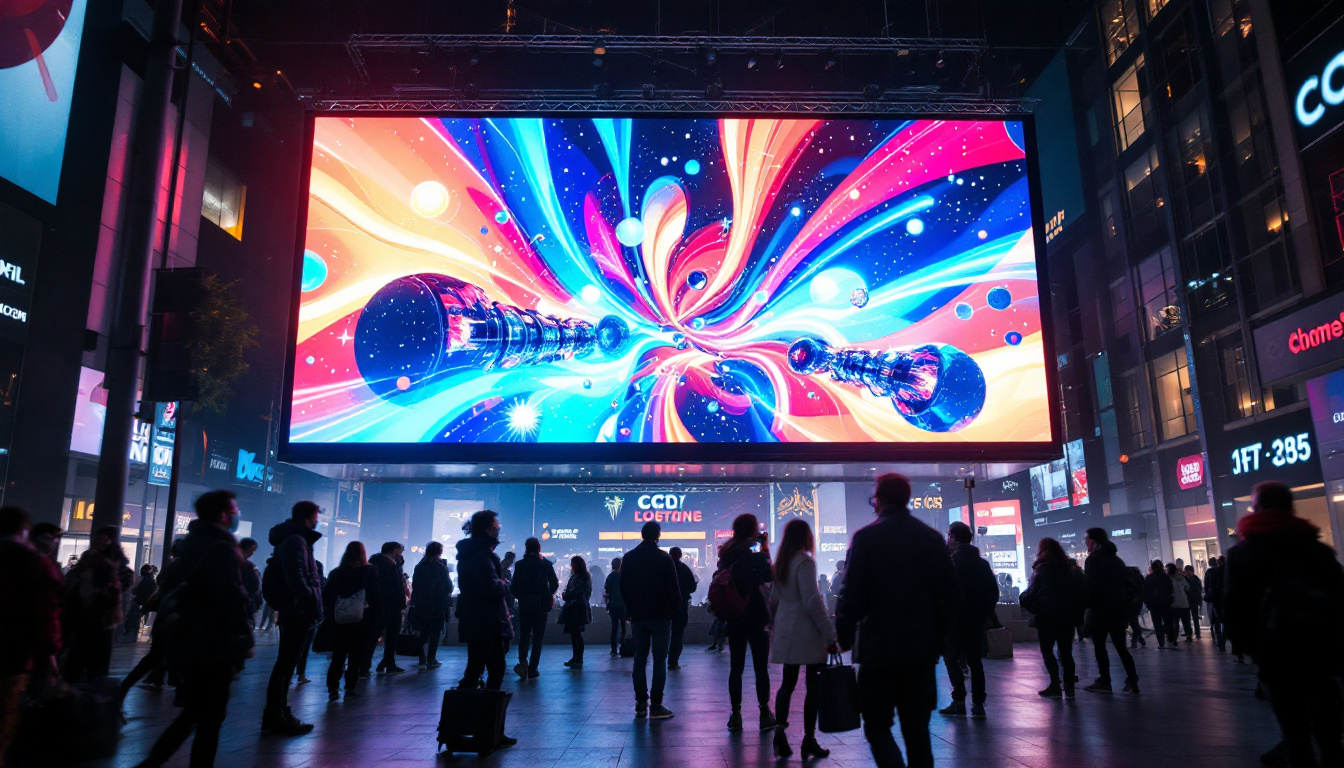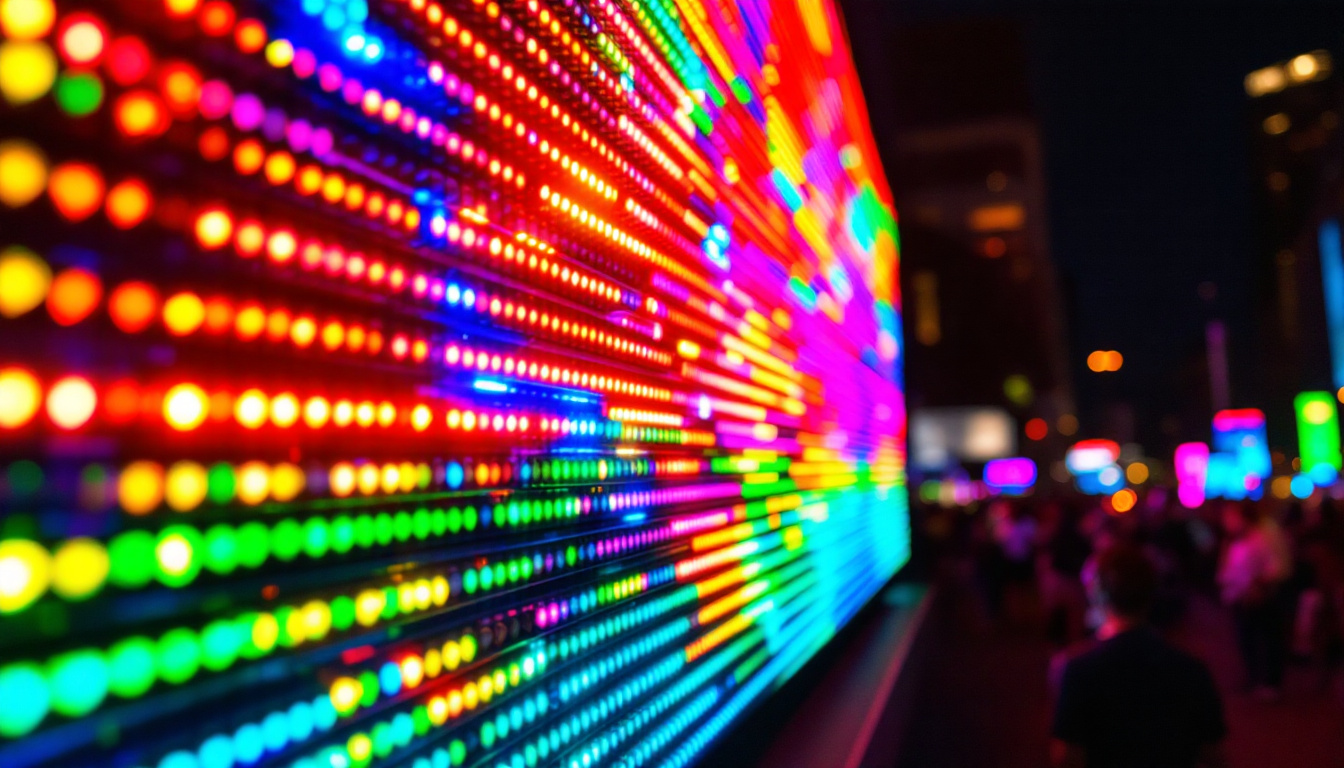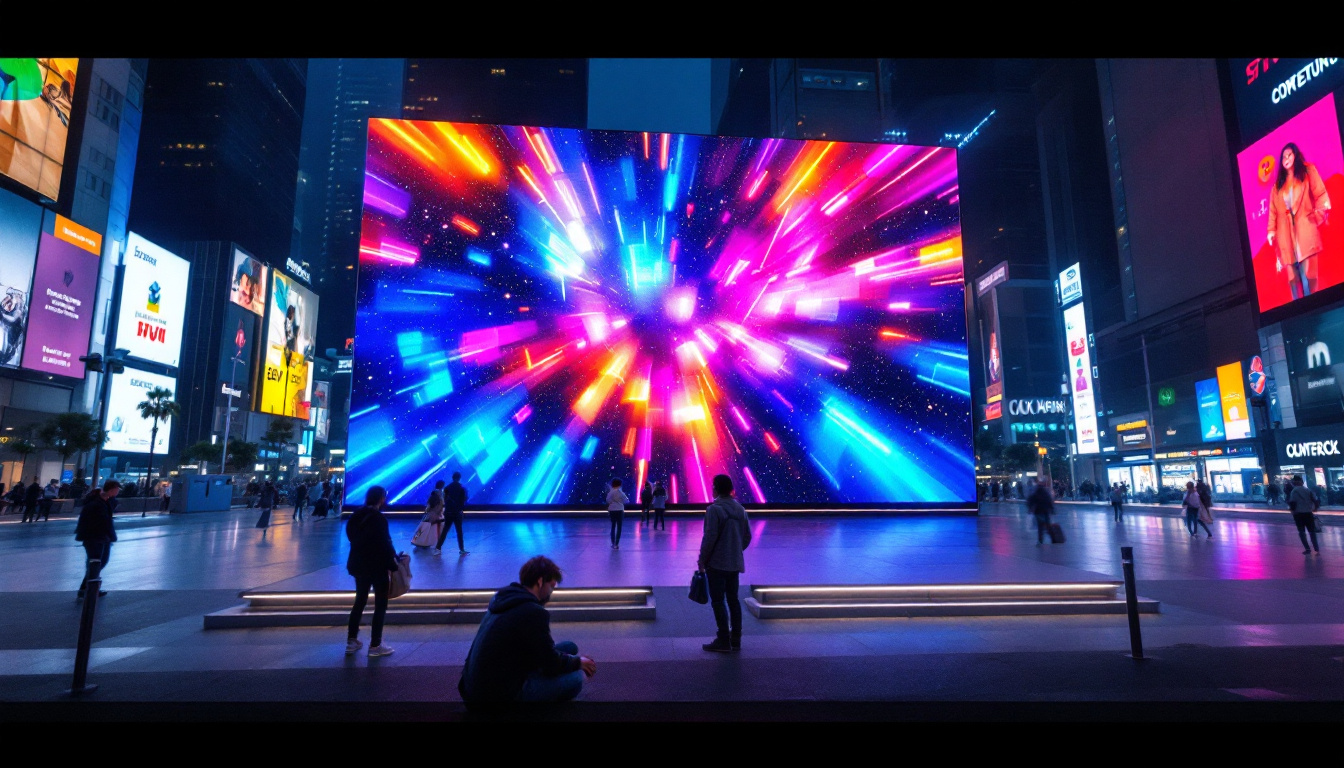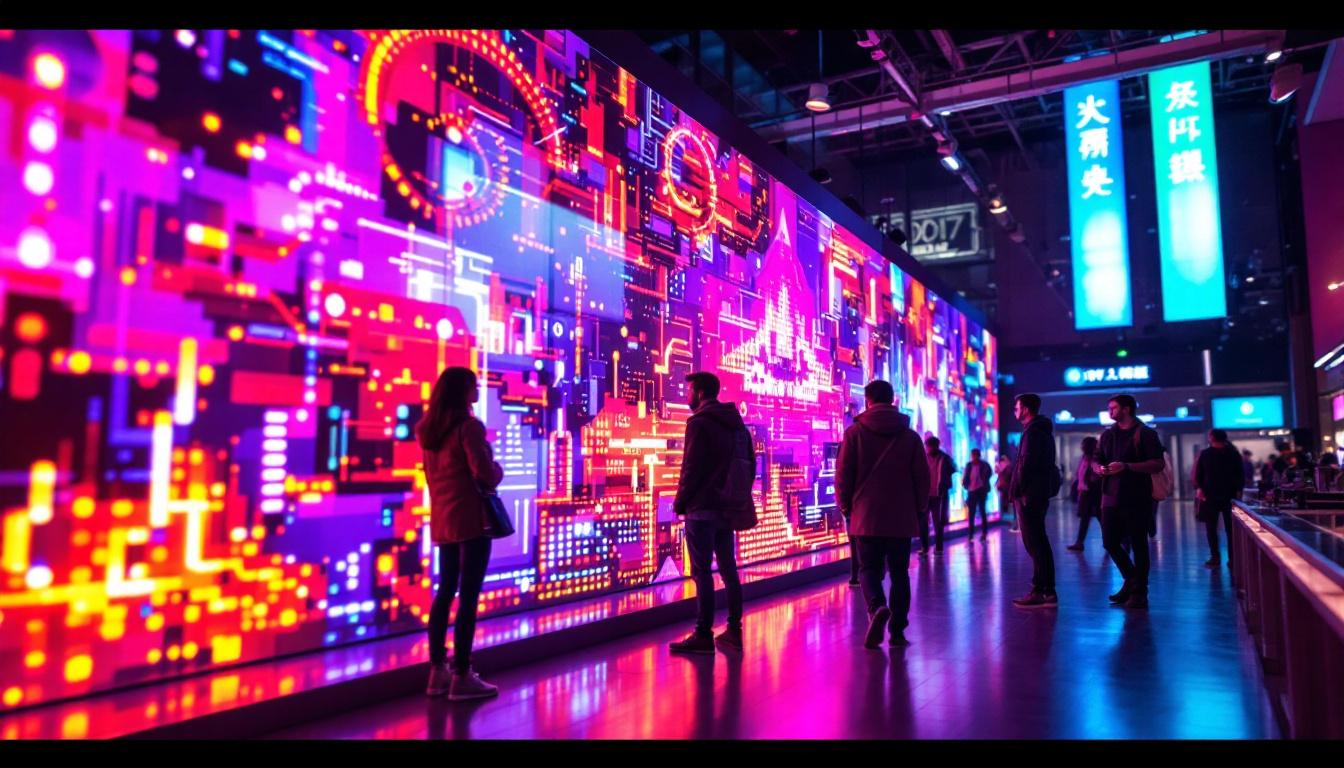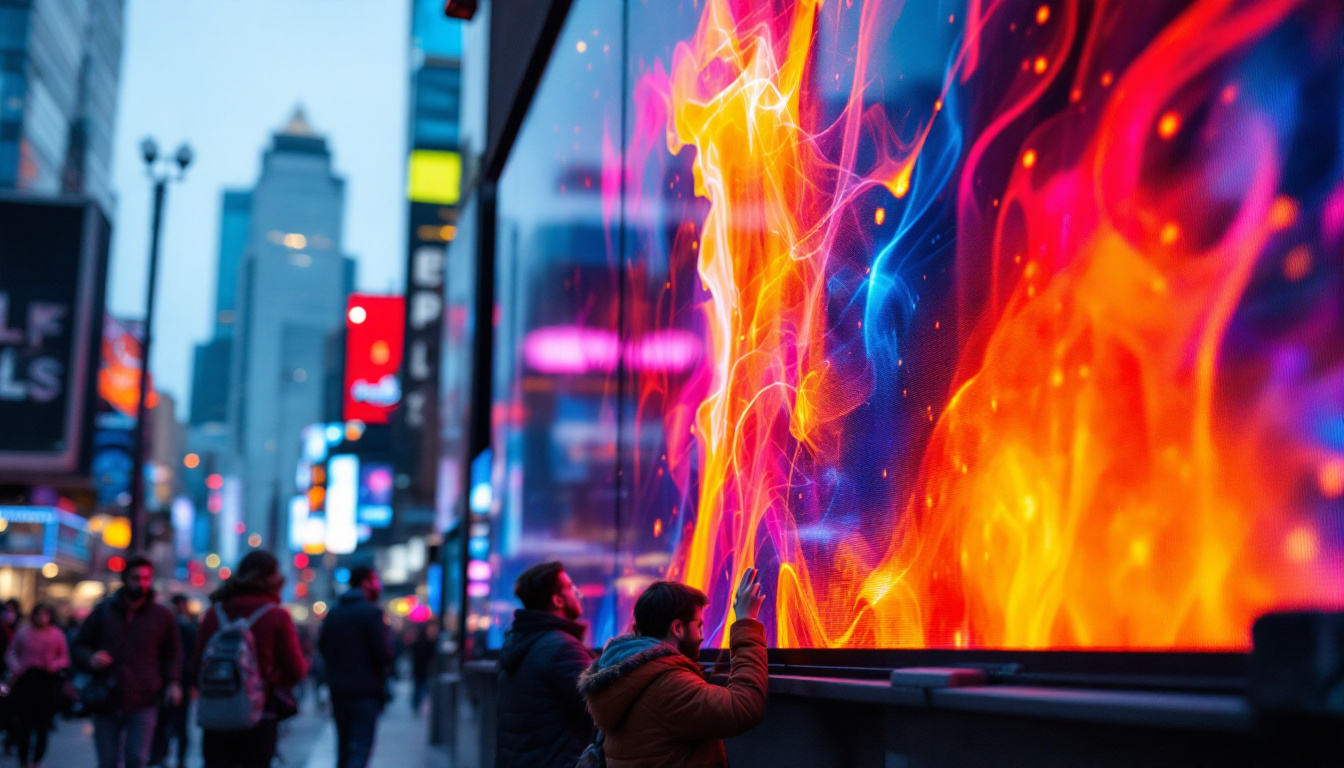In the realm of modern technology, LED displays have emerged as a pivotal element in various applications, from advertising to entertainment. This article delves into the intricacies of LED displays, exploring their functionality, advantages, and the impact they have on our daily lives.
Understanding LED Technology
LED, or Light Emitting Diode, is a semiconductor device that emits light when an electric current passes through it. This technology has revolutionized the way we perceive visual information, making it more vibrant and accessible. The efficiency and longevity of LEDs have made them a preferred choice in various applications, from household lighting to large-scale advertising displays.
The Basics of LED Functionality
At its core, an LED display consists of numerous tiny diodes that work together to produce images and videos. Each diode can emit different colors, and by combining these colors in various intensities, a full spectrum of hues can be created. The arrangement of these diodes determines the resolution and clarity of the display. This modular nature allows for flexibility in design, enabling manufacturers to create displays of any size and shape, catering to the diverse needs of consumers and businesses alike.
LED displays can be categorized into two main types: direct view and backlit. Direct view displays are made up of individual LED modules, while backlit displays use LEDs to illuminate an LCD panel from behind. Understanding these differences is crucial for selecting the right type of display for specific applications. For instance, direct view displays are often favored for their superior brightness and contrast, making them ideal for high-traffic areas, while backlit displays are commonly used in environments where space is limited and a more traditional screen appearance is desired.
Types of LED Displays
LED displays come in various forms, each tailored for specific uses. Common types include:
- Indoor LED Displays: Ideal for indoor environments, these displays offer high resolution and brightness, making them suitable for events, presentations, and retail environments. They often feature advanced color calibration technology to ensure that the visuals remain consistent and true to life, enhancing the viewer’s experience.
- Outdoor LED Displays: Designed to withstand weather conditions, outdoor displays are typically larger and brighter, ensuring visibility even in direct sunlight. These displays are often equipped with protective coatings and robust housing to resist moisture and dust, making them durable and reliable for long-term use.
- Transparent LED Displays: These innovative displays allow for visibility through the screen, making them perfect for retail windows and creative installations. They offer a unique way to blend digital content with the physical environment, allowing businesses to showcase products while maintaining a clear view of the surroundings.
Additionally, there are specialized LED displays such as flexible LED screens, which can be bent and shaped to fit unconventional spaces, and high-definition LED walls that provide stunning visuals for concerts and sporting events. The versatility of LED technology continues to expand, paving the way for more immersive and engaging experiences in both commercial and artistic applications. As advancements in LED technology progress, we can expect even more innovative designs that push the boundaries of visual communication.
Advantages of LED Displays
LED displays have gained popularity for a multitude of reasons. Their advantages extend beyond mere aesthetics, impacting functionality and efficiency as well.
Energy Efficiency
One of the most significant benefits of LED technology is its energy efficiency. Compared to traditional display technologies, such as LCD and plasma, LED displays consume considerably less power. This not only reduces operational costs but also contributes to a lower carbon footprint, making them an environmentally friendly choice. Furthermore, many LED displays come equipped with smart technology that allows for adaptive brightness control, adjusting the light output based on ambient lighting conditions. This feature not only enhances energy savings but also prolongs the lifespan of the display, ensuring that users get the most out of their investment.
Longevity and Durability
LED displays are known for their impressive lifespan, often lasting tens of thousands of hours. This durability makes them a cost-effective investment for businesses and organizations. Additionally, they are less prone to damage from impacts and environmental factors, ensuring a longer operational life with minimal maintenance. The robust construction of LED displays also means they can withstand extreme temperatures and humidity levels, making them suitable for a variety of settings, from bustling outdoor venues to controlled indoor environments. This resilience is particularly advantageous for companies that require reliable performance in diverse conditions, allowing for uninterrupted service and reduced replacement costs.
High Brightness and Contrast
LED displays offer high brightness levels, which is particularly beneficial for outdoor applications. The ability to produce vibrant colors and deep contrasts enhances the viewing experience, making content more engaging and visually appealing. This is especially important in advertising, where capturing attention is crucial. Additionally, the advanced technology behind LED displays allows for superior color accuracy and uniformity, ensuring that images and videos appear true to life. This capability is essential for professional applications such as broadcasting and photography, where precision in color representation can significantly impact the final product. Moreover, with advancements in LED technology, features like HDR (High Dynamic Range) are becoming increasingly common, further enriching the visual experience by providing a wider range of colors and brightness levels that can be displayed simultaneously.
Applications of LED Displays
The versatility of LED displays allows them to be utilized in a wide range of applications, each with unique requirements and challenges.
Advertising and Marketing
In the world of advertising, LED displays have become a staple. Their ability to display dynamic content, such as videos and animations, allows brands to capture the attention of potential customers effectively. From large billboards in busy urban areas to smaller displays in retail stores, LED technology enhances marketing efforts by providing eye-catching visuals.
Entertainment and Events
LED displays play a crucial role in the entertainment industry, particularly in concerts, festivals, and sporting events. Large-scale LED screens are often used to display live feeds, graphics, and advertisements, creating an immersive experience for attendees. The flexibility of LED technology allows for creative stage designs and dynamic visual storytelling.
Transportation and Wayfinding
In transportation hubs like airports and train stations, LED displays are employed for real-time information dissemination. Flight schedules, train arrivals, and wayfinding information are often displayed on LED screens, providing travelers with essential updates. Their visibility and clarity ensure that important information is communicated effectively, contributing to a smoother travel experience.
Challenges and Considerations
Despite their numerous advantages, LED displays are not without challenges. Understanding these challenges is essential for making informed decisions regarding their implementation.
Cost of Installation
The initial investment for high-quality LED displays can be significant. While the long-term savings in energy and maintenance costs are considerable, businesses must weigh the upfront expenses against their budget and expected return on investment. Careful planning and budgeting are crucial to ensure that the benefits outweigh the costs.
Environmental Considerations
While LED displays are generally more environmentally friendly than traditional displays, the production and disposal of electronic components can have environmental impacts. It is important for manufacturers and consumers to consider sustainable practices, such as recycling and responsible sourcing of materials, to minimize these effects.
Content Management
Effective content management is essential for maximizing the potential of LED displays. Businesses must invest in content creation and management systems to ensure that the information displayed is relevant and engaging. This requires ongoing effort and resources, which can be a challenge for some organizations.
The Future of LED Displays
As technology continues to evolve, so too does the potential for LED displays. Innovations in design, functionality, and interactivity are paving the way for exciting developments in this field.
Advancements in Resolution
With the demand for higher resolution displays increasing, manufacturers are continually working to improve pixel density. This advancement allows for more detailed images and smoother video playback, enhancing the overall viewing experience. As technology progresses, 8K and beyond may soon become the standard for LED displays.
Integration with Smart Technology
The integration of LED displays with smart technology is another exciting trend. Smart displays can connect to the internet, allowing for real-time updates and remote content management. This capability opens up new possibilities for businesses to engage with their audience in innovative ways, such as interactive advertising and personalized content delivery.
Flexible and Curved Displays
Emerging technologies are also enabling the creation of flexible and curved LED displays. These innovative designs allow for unique installations that can adapt to various environments and applications. From architectural installations to creative advertising, the potential for flexible displays is vast and exciting.
Conclusion
LED displays have transformed the way information is presented and consumed, offering numerous advantages in terms of efficiency, durability, and visual appeal. As technology continues to advance, the applications and potential of LED displays will only expand, making them an integral part of our technological landscape.
Understanding the intricacies of LED displays, including their functionality, advantages, and challenges, is essential for businesses and organizations looking to leverage this technology effectively. By staying informed about the latest trends and innovations, stakeholders can make strategic decisions that enhance their visual communication efforts and drive engagement.
In a world where visual information is paramount, LED displays stand out as a powerful tool for connection and communication, shaping the future of how we interact with technology and each other.
Explore the Future of Visual Communication with LumenMatrix
As we embrace the transformative power of LED displays, LumenMatrix stands at the forefront of this evolution, offering a suite of innovative LED display solutions tailored to your needs. Whether you’re looking to enhance brand visibility, captivate audiences, or create immersive visual experiences, our range of products, including Indoor and Outdoor LED Wall Displays, Vehicle LED Displays, and more, are designed to revolutionize your visual communication. Ready to elevate your message with unparalleled clarity and impact? Check out LumenMatrix LED Display Solutions and join the vanguard of digital signage innovation.

